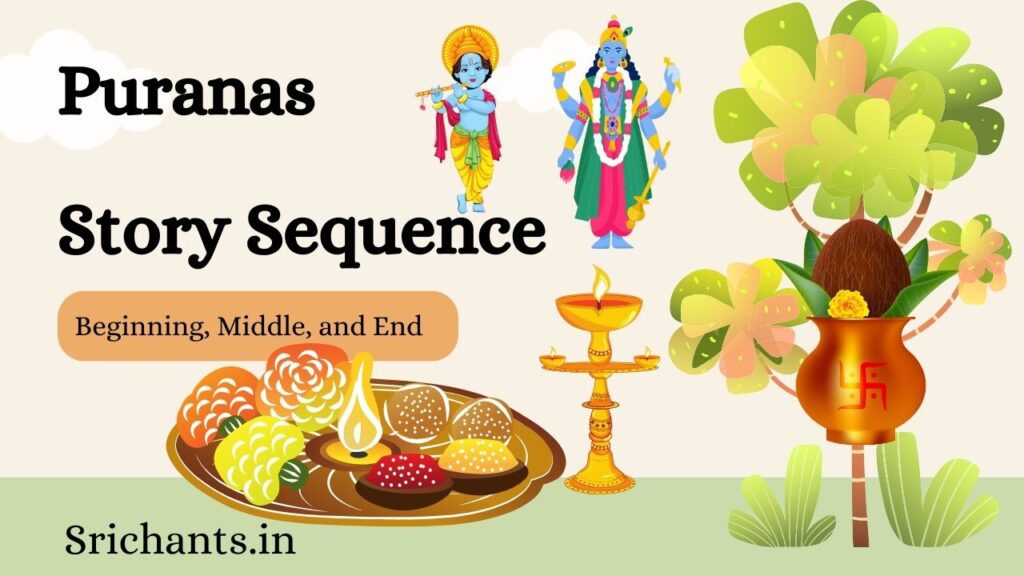The Puranas: Unveiling the Ancient Texts of Hinduism
Introduction
Hinduism, one of the world’s oldest religions, possesses an extensive assemblage of sacred scriptures referred to as the Puranas. Genealogies of kings, heroes, sages, and deities, in addition to narratives concerning the creation and annihilation of the universe, are contained in these ancient texts. In addition to providing religious doctrines, the Puranas also comprise treatises on cosmology, geography, and Hindu philosophy. This article will illuminate the significance of the Puranas in Hindu literature by examining their origins, classifications, and significance.
Origins of the Puranas
The early mention of the term “Purana” in the Chandogya and Brhadaranyaka Upanishads demonstrates the religious significance that these myths held in antiquity. The term “Purana,” which translates to “ancient times,” denotes the oral transmission of traditional knowledge and represents its preservation. The compilation of the Puranas into written form ultimately occurred under the sage Vyasa, who is traditionally regarded as their compiler.
Despite the fact that the texts’ contents existed prior to their transcription in the Gupta Empire (4th to 6th century CE), the puranas in their earliest known form trace back to that time. The collection of these texts from diverse regions of India presents a challenge in establishing an exact lineage of influence among the various Puranas. Hence, it is most advantageous to perceive the collection of Puranas in its entirety at once.
The Mahapuranas: Epics of Divine Tales
The most consequential segment of the Puranas comprises the Mahapuranas, which are frequently regarded as the most vital. The Mahapuranas consist of eighteen distinct texts, each possessing a distinct emphasis and subject matter. Let us explore a selection of the most significant Mahapuranas:
1. Agni Purana
The Agni Purana, comprising 15,400 verses, functions as an all-encompassing encyclopedia encompassing a wide range of subjects. It also includes iconography, geography, cultural history, governance, and educational systems. The organization of the army, theories on warfare, diplomacy, and local laws are all covered in this Purana. Moreover, it encompasses a wide range of topics, including but not limited to medicine, Vastu Shastra (architecture), gemology, poetry, and rituals.
2. Bhagavata Purana
Recognized as one of the most renowned and widely read Puranas, the Bhagavata Purana is eighteen verses in length. The text describes the ten incarnations (Avatars) of Lord Vishnu and is fundamental to the Vaishnavism faith. The lengthy and tenth canto of this Purana provides an in-depth analysis of the juvenile exploits of Lord Krishna, shedding light on his life and deeds. Additionally, the Bhakti movement popularized the narratives contained in this Purana.
3. Brahma Purana
The 10,000-verse Brahma Purana, alternatively referred to as the Adi Purana, is frequently positioned as the initial of the eighteen Mahapuranas. It is connected to the Mahabharata and the Vishnu, Vayu, and Markandeya Puranas through a number of passages. A diverse array of subjects is addressed in this Purana, encompassing mythology, the theory of war, temple architecture, and various cultural facets. Contrary to its nomenclature, the Brahma Purana does not extensively center on the celestial being Brahma.
4. Vishnu Purana
The Vishnu Purana, comprising 23,000 verses, is an ode to Lord Vishnu and describes his many facets and deeds. This text holds great importance for Vaishnavites as it offers valuable insights into the genealogy of monarchs, sages, and deities. Additionally, cosmology, Hindu philosophy, and the creation of the universe are covered in the Vishnu Purana. It is a fundamental scripture for comprehending the principles of Vedanta.
5. Shiva Purana
Featuring a total of 24,000 verses, the Shiva Purana is an ode to Lord Shiva. The composition comprises narratives, hymns, and anecdotes that explore the multifaceted nature of Shiva, his consort Parvati, and their divine personas. Cosmology, the origin of the universe, and the interrelation of the gods are all explored in this Purana. Furthermore, it examines various schools of Hindu philosophy and posits the ethical dichotomy between good and evil.
The Upapuranas: Ancillary Texts
In addition to the Mahapuranas, a total of eighteen Upapuranas are present, functioning as supplementary literature. Despite their relatively low significance, these texts continue to be meaningful within the Hindu tradition. In addition to the Vamana Puranas, the Sanat-kumara Puranas are also noteworthy Upapuranas. Every Upapurana centers on distinct narratives and themes, frequently associated with a specific deity.
Significance and Influence
The Puranas have influenced religious practices and beliefs and are of critical importance to Hindu culture. They have functioned as a repository of religious and historical texts, in addition to inspiring significant national and regional celebrations. Notwithstanding their heterogeneous substance and intermittent incongruity, the Puranas have furnished an all-encompassing comprehension of Indian mythology, ceremonial practices, and moral principles.
Substantially influencing the Bhakti movement, a devotional trend within Hinduism, are the Puranas as well. Their influence has been instrumental in the formation of sects dedicated to particular deities, such as Vishnu, Shiva, or Devi. Scholars have offered commentary and examined the Vedantic elements and underlying themes of the Puranas through the lenses of dualistic (Dvaita) and non-dualistic (Advaita) perspectives.
Conclusion
The Hindu Puranas, renowned for their illustrious narratives and wide-ranging content, possess tremendous literary importance. Ancient texts contain philosophical teachings and insights into the origin and demise of the universe, as well as genealogies of heroes and deities. Each text of the Mahapuranas and Upapuranas focuses on a distinct deity and subject matter, thereby imparting a bounty of knowledge. Sufficient in guiding and motivating millions of Hindus, the Puranas ensure that future generations retain their religious traditions and cultural heritage.








